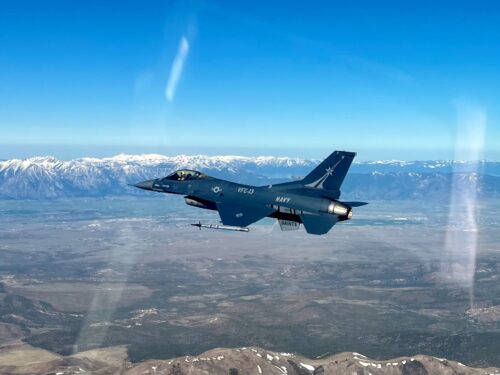The U.S. Navy has revealed for the first time its previously undisclosed attempt to acquire F-16 Fighting Falcons from Greece, as part of its ongoing efforts to modernize its adversary air capabilities. This revelation comes as the Navy Reserve welcomed its newest F-16 to the fleet on August 27, 2024, marking a crucial milestone in the Tactical Support Wing’s (TSW) long-term modernization strategy initiated in 2009.

Photo: U.S. Navy
The acquisition of F-16s gained public attention when Vice Admiral John B. Mustin, Chief of Navy Reserve, first mentioned the plan during his testimony before the House Subcommittee on Defense Committee on Appropriations for Fiscal Year 2022 National Guard and Reserve on May 4, 2021. At that time, Vice Admiral Mustin outlined a proposal to replace F/A-18C aircraft with F-16s from the United States Air Force and Air National Guard, citing the need for advanced, high-fidelity adversary support.
The Navy’s pursuit of F-16s was accelerated due to the early retirement of F-18A/B/C/D Legacy Hornets, which created an urgent need for capable adversary aircraft. With only 12 Super Hornets available to replace approximately 48 Legacy Hornets, alternative solutions were essential to maintain effective training capabilities against evolving threats.
Commander Traver Fordham, Executive Officer of VFC-13, elaborated on the acquisition process: “After encountering issues with buying from Greece, we capitalized on the Air Force’s plan to retire over 30 F-16s with 2,000 to 3,000 flight hours remaining. This led to a successful transfer agreement for 30 aircraft, 26 of which were allocated for Navy use, with 12 specifically designated for VFC-13.”
The transition to F-16s has presented substantial logistical and operational challenges. TSW Safety Officer Commander David Radomile highlighted the complexities involved, including the retraining of 30 pilots, procurement of a new F-16 simulator, and the establishment of the Viper Maintenance Group (VMG), a joint maintenance element supporting both VFC-13 and the Naval Aviation Warfighting Development Center (NAWDC).
In 2023, VFC-13 achieved a significant milestone by completing its first Strike Fighter Advanced Readiness Program (SFARP) exclusively using F-16s and was subsequently declared Safe-for-Flight. The latest delivery brings TSW’s F-16 fleet to a total of 13 aircraft, significantly enhancing the Navy’s capacity to provide realistic adversary training for its aviators.
This acquisition underscores the Navy’s commitment to maintaining cutting-edge training capabilities in the face of evolving global threats. As outlined in Vice Admiral Mustin’s 2021 testimony, future funding will be required to further modernize these aircraft with threat representative capabilities such as Infrared Search and Track Systems and the evolution of the Adversary data link known as RedNet, ensuring that naval aviation forces remain at the forefront of readiness and capability.
For more information, hit the Source below
Problem including USN’s procurement of Greece F-16s was not included in the news.
Most likely scenario was that Lockheed Martin wanted to sell USN brand new F-16s which drew Congressional interest. USN was not interested in buying new F-16s but in obtaining Greek F-16s. Another problem could be State Department looking into it. Or Greece had work out F-16s requiring rework. And solution provided by USAF was the best for Navy.